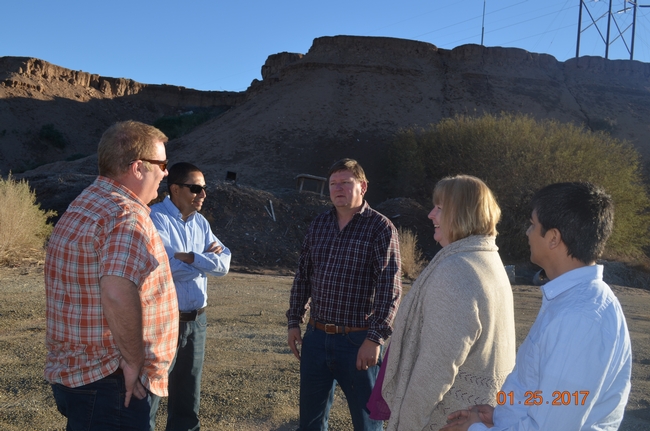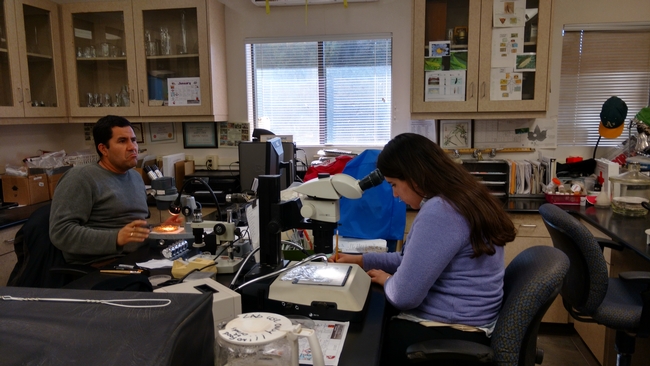Admittedly, when I have thought about southern California in the past, I have imagined that once you moved east of the crowds and beaches it was a barren desert sans camels. But UC ANR personnel in Riverside and Imperial Counties have shown me that there is so much more to the far southeastern part of the state! The Coachella Valley, in particular, is just beautiful. From what seems like an enormous amount of cilantro and dill to orchards, rows of 7-acre greenhouses, and leading table grape production, the 60+ crops not to mention feedlot inventory, meat processing and hay acreage have changed my impression of those counties and opened my eyes to some of the challenges and opportunities in the region. I want to thank Jairo Diaz, Oli Bachie, Jose Aguiar, Eta Takele Carmen Gispert, Sonia Rios, and Pratap Devkota (new Advisor in Imperial County!) for helping me get up to speed as well as Vince, Scott and Jeff for letting us stop by their operations.
Clearly I'm not the only one intrigued by all of the production in the desert. While we were at the Imperial UCCE and REC facility, there was a group there as participants in the winter tour series. I learned this is part of the FARM SMART program; an initiative that spans youth development, community nutrition, gardening and agritourism. Overall, it's a fascinating program and a novel way to tie all the strengths of UCCE together while reaching a number of target audiences.
Chris Greer, Oli, Pratap, Jairo and I also spent some time with David Bradshaw from the Imperial Irrigation District to see firsthand the New River Wetlands project, designed to alleviate degradation of the Salton Sea. We stood at the edge of the Salton Sea but water levels are clearly low already and projected to go even lower in the near future.
The trip to the desert was enlightening, as much because of what was growing in the desert as because of the insights it provided about how important our partnerships across the borders (state and national) are in that region. Repeatedly I heard that clientele include growers from El Centro, Indio, Yuma and Mexicali, alike. And students from Mexico are an important part of the research underway. The strong partnerships and stakeholder support became obvious when I was able to meet so many special guests that attended lunch at the Imperial UCCE and REC facility. Guests included the local Farm Bureau, area growers, NRCS and commodity group representatives, and administrators from a university in Mexicali. A great turnout and a great meal prepared by the personnel.


